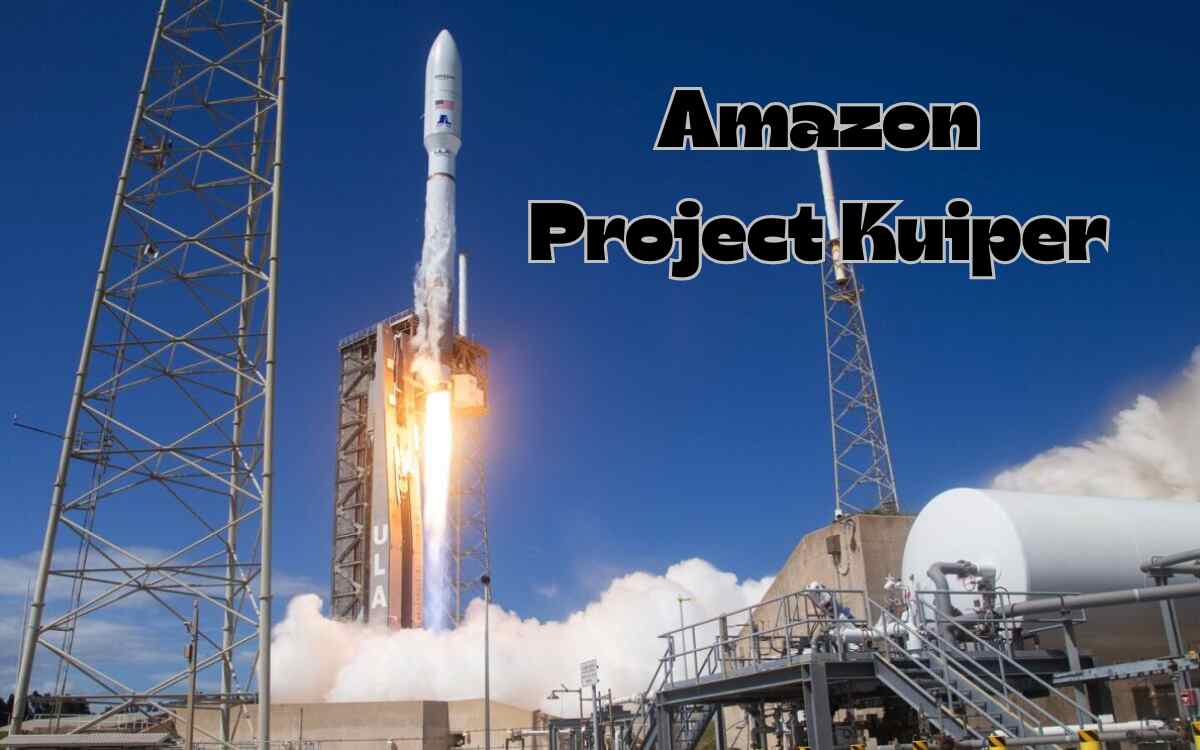Amazon first Project Kuiper launch date is set for Wednesday, April 9. The name of the mission is “KA-01” for Kuplier Atlas 1, in which 27 low-Earth orbit satellites will be deployed at an altitude of 280 miles (450 kilometers) above Earth on a United Launch Alliance (ULA) Atlas V rocket from Cape Canaveral Space Force Station, Florida.

Amazon’s Project Kuiper: Competitor of Starlink
Project Kuiper of Amazon is a low Earth orbit (LEO) satellite broadband network. As Amazon’s mission is to provide fast and affordable connectivity all around the world, Project Kuiper will help in delivering high-speed, low-latency internet to virtually any location on the planet and for everyone.
As Starlink is competing alone in this field for a long while, Amazon is ready to compete in the market with a plan to call for 3,200 satellites to be deployed over 80 launches
The company expects to start its service delivery to customers later this year.
The project will help in increasing global broadband access through a constellation of more than 3,000 satellites in low Earth orbit.
To deploy the majority of the satellite constellation, Project Kuiper has already secured 80 launches from Arianespace, Blue Origin, SpaceX, and United Launch Alliance, along with Blue Origin for additional launches.
Among 80 launches, the KA-01 mission is the first one in which 27 satellites launch on a United Launch Alliance (ULA) Atlas V rocket at an altitude of 280 miles (450 kilometers) above Earth.
The company will provide updates on the launch as well as a launch livestream on the ULA’s “Kuiper 1” mission page.
After the KA-01 mission, the production, processing, and deployment rate will be increased to begin delivering service to customers, as said by Amazon.
The next mission, i.e., KA-02, will also use a ULA Atlas V rocket, and shipping and processing satellites has already been started by Amazon for the next mission.
What to expect from Kuiper?
Amazon has mentioned Kuiper as a major challenger due to its expansive infrastructure and significant resources.
“Project Kuiper isn’t just about competition; it’s positioned as a critical step toward closing the global digital divide, promising to deliver high-speed internet to underserved communities worldwide”, said by ‘Mahdi Eslaminehr’, executive vice president at Quandary Peak Research and adjunct professor at the Department of Computer Science at USC.
The Project Kuiper plan has been outlined by Amazon for user terminals, or dishes, starting with a compact seven-inch model capable of delivering speeds up to 100 megabits per second.
Larger terminals are supposed to provide significantly higher speeds, reaching up to 1 gigabit per second.
The target price point of Amazon’s Kuiper would be under $400 for the customer terminals, which would be competitive compared to options like Starlink’s terminals.
For all latest tech and Android news, follow Technology Navigator, your daily dose of technology.
